As springtime arrives, many of us want to add a bit of beauty to our homes and lives. There is an abundance of flowers to choose from, but for those looking for the best of the best, tulips and roses tend to stand out significantly. That’s why we’ve created this comparison between these two beloved blooms to help people make the best decision for their gardens.
When deciding whether roses or tulips are a better fit for your garden, there are several questions you need to ask yourself. We will detail each one below, as well as the benefits and drawbacks of each flower. Let’s get started!
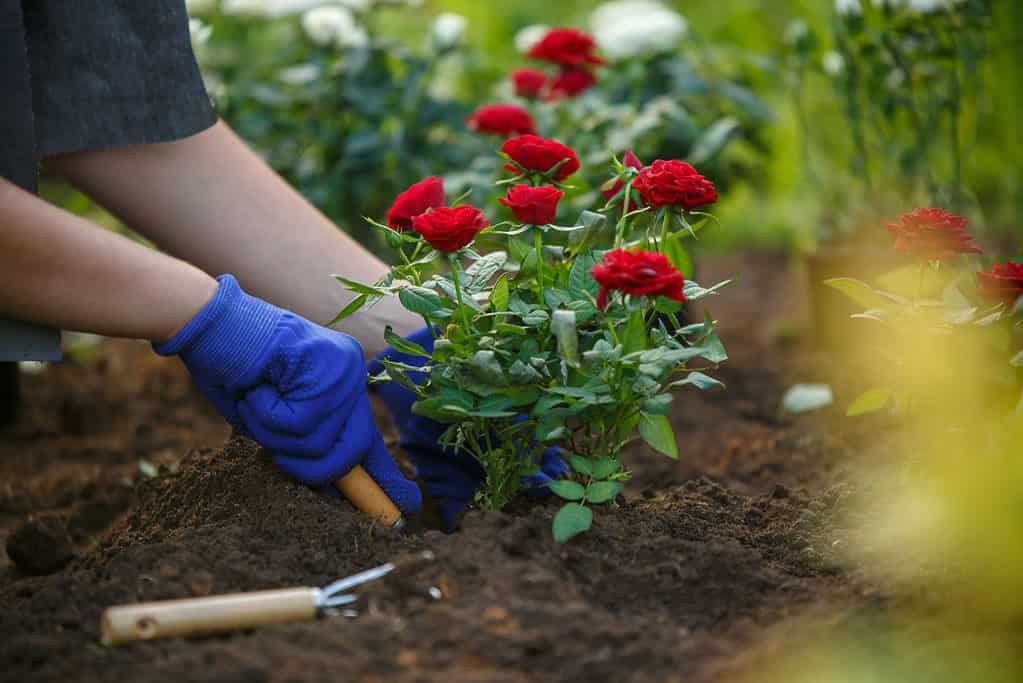
There are many factors to consider when choosing to plant roses or tulips in your garden, including bloom time, climate and maintenance.
©Sergey Mironov/Shutterstock.com
When Will They Bloom?
Tulips are called spring-flowering bulbs for a good reason. Tulips typically bloom in the early, mid, or late spring, usually flowering from April to May. There are many varieties of tulips, each designed to bloom during a different spring month. There are no tulips that naturally bloom in the summer or fall. However, you can force them to do so with cold storage methods.
Rose blooms vary greatly depending on the type and cultivar of rose chosen, but generally, roses tend to flower in mid-spring up until the first frost in the late fall. Hybrid tea roses may also have repeat blooming during this time frame. It is important to research what types of roses you are planting in your garden before deciding when they will bloom so that you can plan accordingly and enjoy their beauty throughout most of the season!
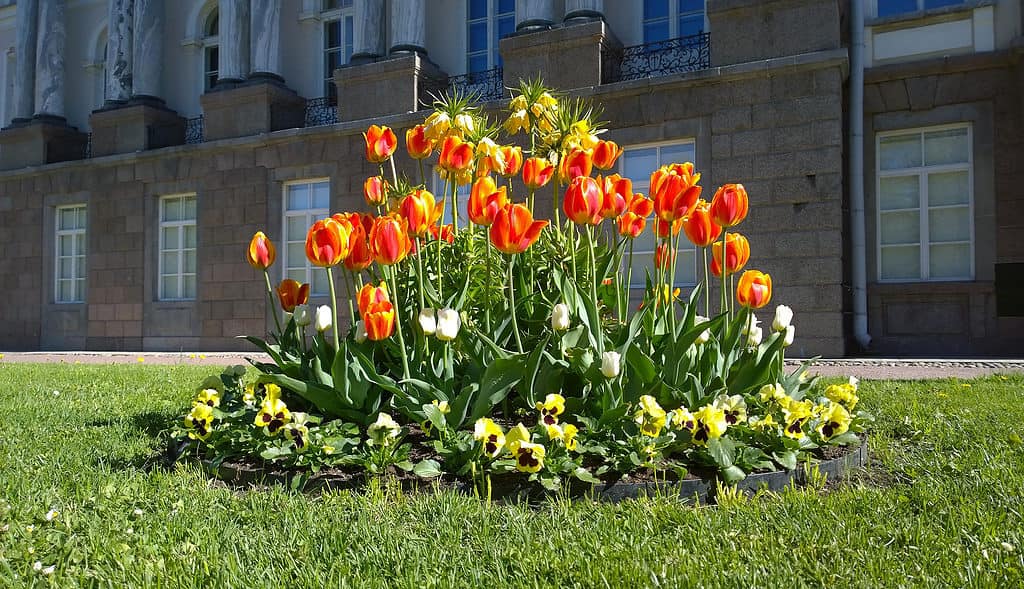
Tulips typically bloom in the early, mid, or late spring, usually flowering from April to May.
©iStock.com/NVS
How Long Will They Bloom?
Tulips typically bloom for about two to four weeks, depending on the variety. On average, tulips will bloom from late April through early May.
Roses generally have a longer blooming period than tulips, lasting anywhere from eight weeks to 4 months. Depending on the type of rose and climate conditions, roses can continue to bloom throughout the summer until frost occurs in autumn. Both roses and tulips require full sun for at least 6 hours per day in order to reach their full potential when it comes to flowering time and color intensity.
How Long Do They Live?
Tulips are generally thought of as short-lived flowers. The bulbs typically produce flowers for 3 to 5 years, depending on the climate and type of tulip. After this period, they must be replaced in order to continue flowering. However, some species of tulip can last up to 7 years with proper care and maintenance. To ensure successful growth from year to year, deadhead any blooms that have faded and fertilize the soil once every season before new growth begins. Additionally, lifting and dividing the bulbs at least every four years will help invigorate them for more seasons of bloom.
Roses are one of the longest-lived flowers, with some varieties able to survive for decades in ideal conditions. Many heirloom roses around the world have reached the 100-year mark! Most new hybrid roses have an average lifespan of seven to ten years, although some species can live up to 30 years when given proper care. The key factor affecting the life expectancy of a rose is environmental factors such as temperature, humidity, soil quality, and exposure to pests or disease. To maximize the lifespan of your roses, provide them with plenty of sunlight and water. Use fertilizer regularly, prune old canes, remove dead blooms promptly, and protect against common pests like aphids and mites. With the right care, you should be able to enjoy these beautiful plants for many years!
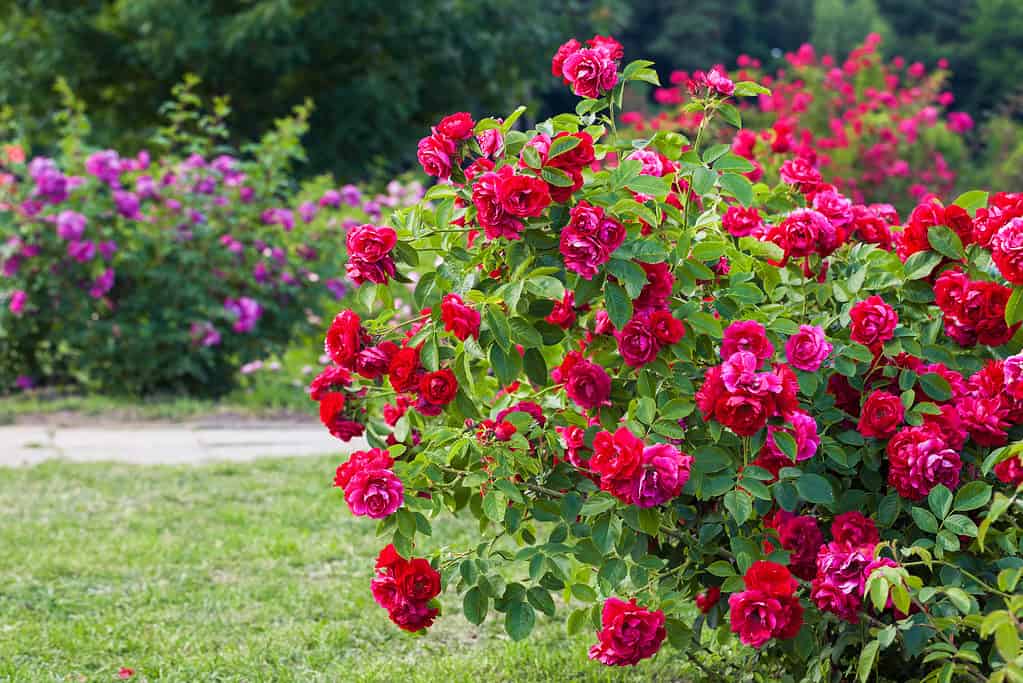
Roses are one of the longest-lived flowers, with some varieties able to survive for decades in ideal conditions.
©iStock.com/ChamilleWhite
How Much Maintenance Do They Require?
Tulips definitely win the contest in the maintenance department. You plant the bulbs in the fall, pull the occasional weed, and enjoy the flowers in the spring. Maybe the occasional sprinkling of fertilizer if they are lucky.
Roses require a lot of care and attention if you want them to look their best. They need regular pruning in order to maintain their shape, promote new growth, and remove dead or diseased branches. Roses also need plenty of water in order for the blooms to stay vibrant – at least 1 inch every week. During dry periods, they may need more water than usual. Additionally, roses will benefit from fertilization 2-3 times during the growing season with an all-purpose fertilizer that is high in nitrogen and potassium but low in phosphorus. Lastly, it’s important to check your roses frequently for signs of pests or diseases so any issues can be addressed before they spread throughout the plant. With proper maintenance and attention, you’ll have beautiful roses blooming each year happily!
How Much Do They Cost?
This is another category where tulips generally win over roses. If you hold out for a good sale, you can purchase tulip bulbs for as little as 25 cents per bulb. Even fancy double-flowering or parrot tulips are less than fifty cents. You can go a little bit crazy trying to collect hundreds of different cultivars, but in general, they are inexpensive plants. Do keep in mind that you have to purchase tulip bulbs every 3-7 years as they fade, so there is that cost to consider as well.
Roses, however, are purchased as whole plants. Either bare-root plants or potted ones. They range from $30 to $55 USD, depending on the size of the rose and whether they are rare or common varieties. Roses also cost more in terms of fertilizer over time. The upside is that roses last much longer than tulips, so you don’t have to purchase a new one every few years.
How Big is Your Garden?
The two plants may be equal in terms of size. Tulips generally only need a few square inches of soil. Some varieties are 10 inches tall, and some that are 24 inches tall.
Roses come in short groundcover varieties that grow only eight inches tall, miniature varieties that start at 12 inches, floribunda and grandiflora roses that are 4-6 feet tall, and climbing roses that can cover a trellis or sometimes an entire house. There is a rose or tulip to fit every size garden!
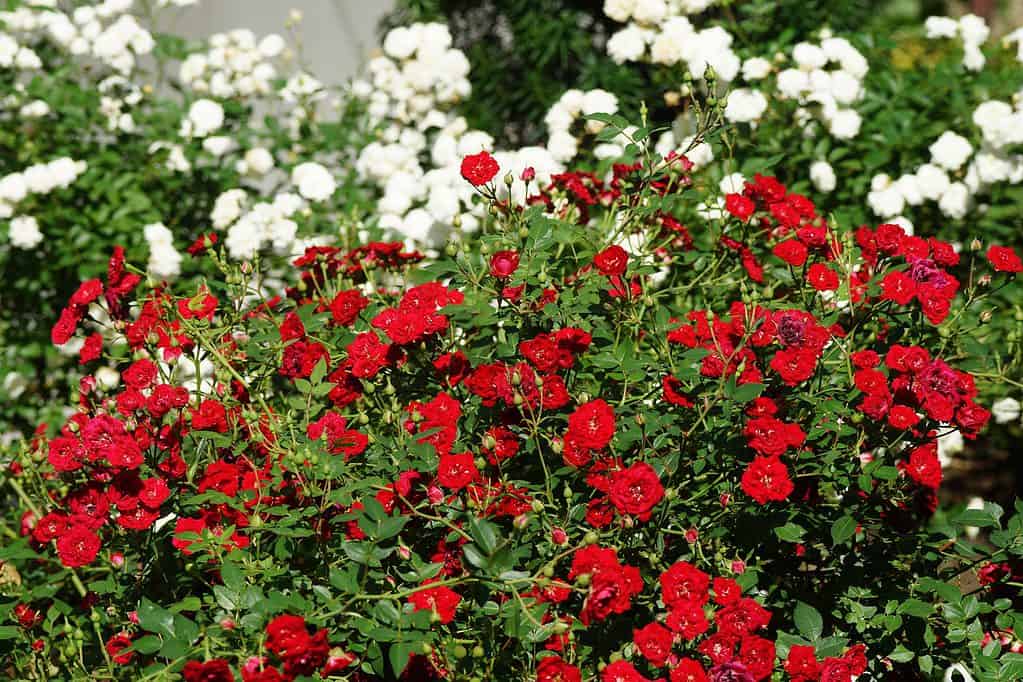
Roses come in various sizes such as groundcover varieties that grow only eight inches tall.
©Adam November/Shutterstock.com
What is Your Climate?
Of course, when deciding whether to plant tulips or roses, the location and temperature of your garden are major considerations.
Tulips are quite hardy and can be grown in USDA Zones 3-7. They require a period of cold winter dormancy to bloom, with a minimum temperature of 20 °F for five weeks or more. Once the ground warms up in springtime, tulip foliage will begin to appear aboveground. After this stage has been reached and temperatures reach around 50 °F during the day, these flowers should bloom within six weeks. It’s important to note that tulips are perennials, but they may not come back year after year if your climate isn’t suitable for them.
Roses have a wide range of hardiness, depending on the variety. According to the USDA Plant Hardiness Zone Map, most rose varieties are suitable for planting in Zones 4-9. With proper care and protection, some varieties can even thrive as far north as Zone 3 and as far south as Zone 10 or 11. Generally speaking, roses prefer climates with warm days and cool nights, but they can tolerate temperatures down to -25 degrees Fahrenheit if properly protected from wind chill. Additionally, there are certain regions where roses will not do well due to soil conditions or disease pressure. Areas known for high humidity, such as coastal Florida, may be less than ideal for growing roses successfully.
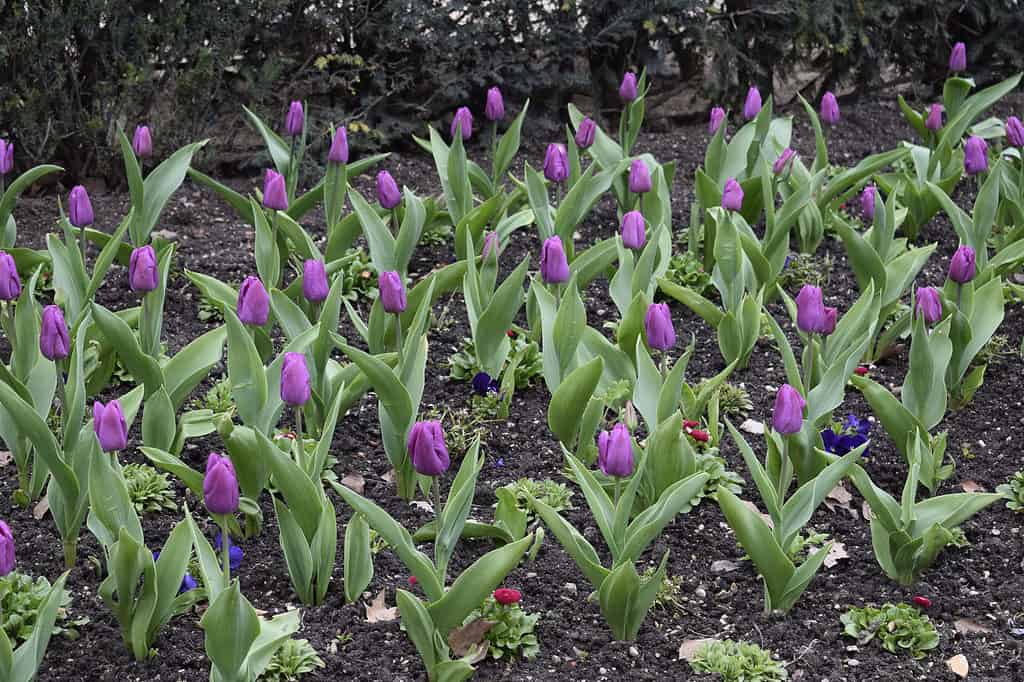
Once the ground warms up in springtime, tulip foliage will begin to appear aboveground.
©iStock.com/Wirestock
When Do You Plant Them?
When deciding between tulips vs. roses, the timing of cultivation is an important factor to consider. To plant tulip bulbs, you will need to place them in the ground before it freezes during fall. This allows them to experience a chill over winter, which is necessary for them to flower in the spring.
Meanwhile, roses should be planted when they are dormant, either in winter or early spring. This depends on the type of rose you have chosen as well! If you have opted for bare-root roses, then these should be planted in winter before new growth begins forming while the plant is dormant. Potted roses can wait until after any potential frost danger has passed.
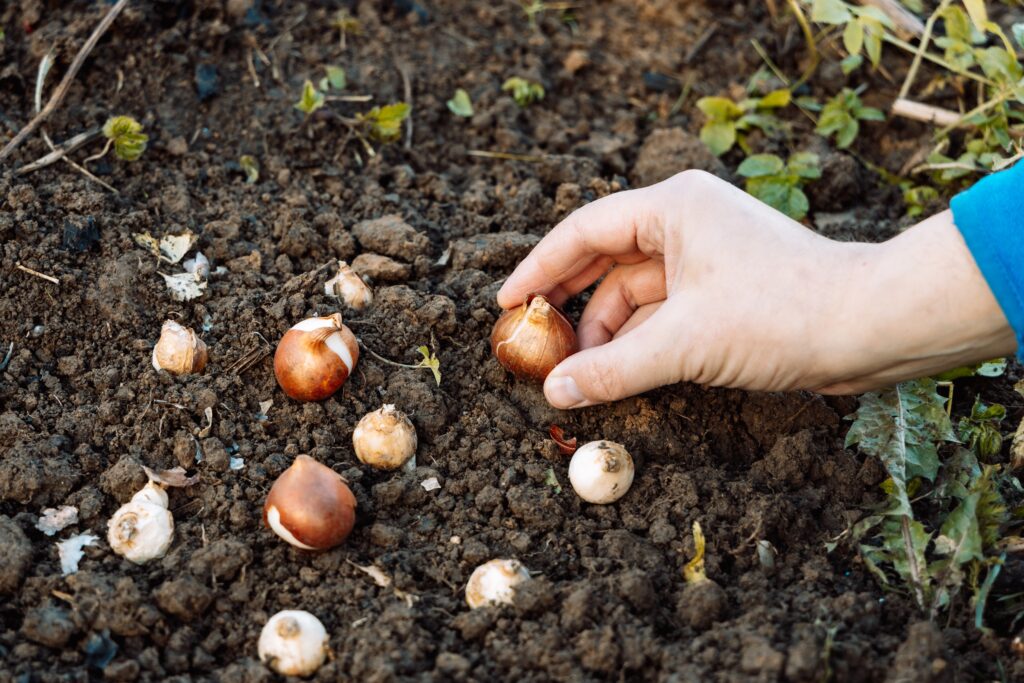
Plant tulip bulbs in the ground before it freezes during fall with the pointy end facing up.
©S.O.E/Shutterstock.com
What About Fragrance?
For some folks, the flower’s scent is the number one consideration. If you are planning an important bouquet, like a wedding, you want the flowers to smell good. Or may you have allergies and don’t want a scented flower at all.
The answer to the question of whether tulips have a scent is yes, but not all tulips are scented. The strength of the scent varies greatly between species and varieties. Some have a very mild fragrance, while others may be quite strong. If you’re looking for an aromatic addition to your garden, consider varieties like Tulipa ‘Negrita’ or Tulipa ‘Flaming Parrot,’ both of which are known for their fragrant blooms.
Roses are widely known for their fragrant blooms, and there is a wide variety of rose scents available. Some common scented roses include the damask rose, which has a spicy scent. Tea roses have a light tea-like aroma, and musk roses smell like musk. There are also several hybrid varieties of roses with different fragrances, such as hybrid tea roses, which can range from fruity to spicy to floral in scent. Not all roses are scented, however. Some varieties of floribunda or grandiflora lack the fragrance that other types may possess.

Roses are widely known for their fragrant blooms, and there is a wide variety of rose scents available.
©iStock.com/morrowlight
Summary of Roses vs. Tulips: Which Is Better for Your Garden?
| Consideration | Tulips | Roses |
|---|---|---|
| When do they flower? | Spring | Spring through fall |
| How big do they get? | 10 inches to 24 inches tall | 6 inches to 90 feet tall |
| How long do they live? | 3 to 7 years | 7 to 100 years |
| Are they fragrant? | Some are mildly fragrant. Most are not. | Most are fragrant. Some are not. |
| Will it grow in my climate? | Hardy in USDA Zones 3-7 | Hardy in USDA Zones 4-9 |
| When do I plant it? | Plant bulbs in the fall before the ground freezes. | Plant bare-root roses in winter. Plant potted roses in spring. |
| How long does it bloom? | 4-8 weeks | 8 weeks to 4 months |
| Is it high-maintenance | No | Yes |
| How much do they cost? | 25 to 55 cents per bulb | 30 to 55 dollars per plant |
The photo featured at the top of this post is ©
Thank you for reading! Have some feedback for us? Contact the AZ Animals editorial team.






